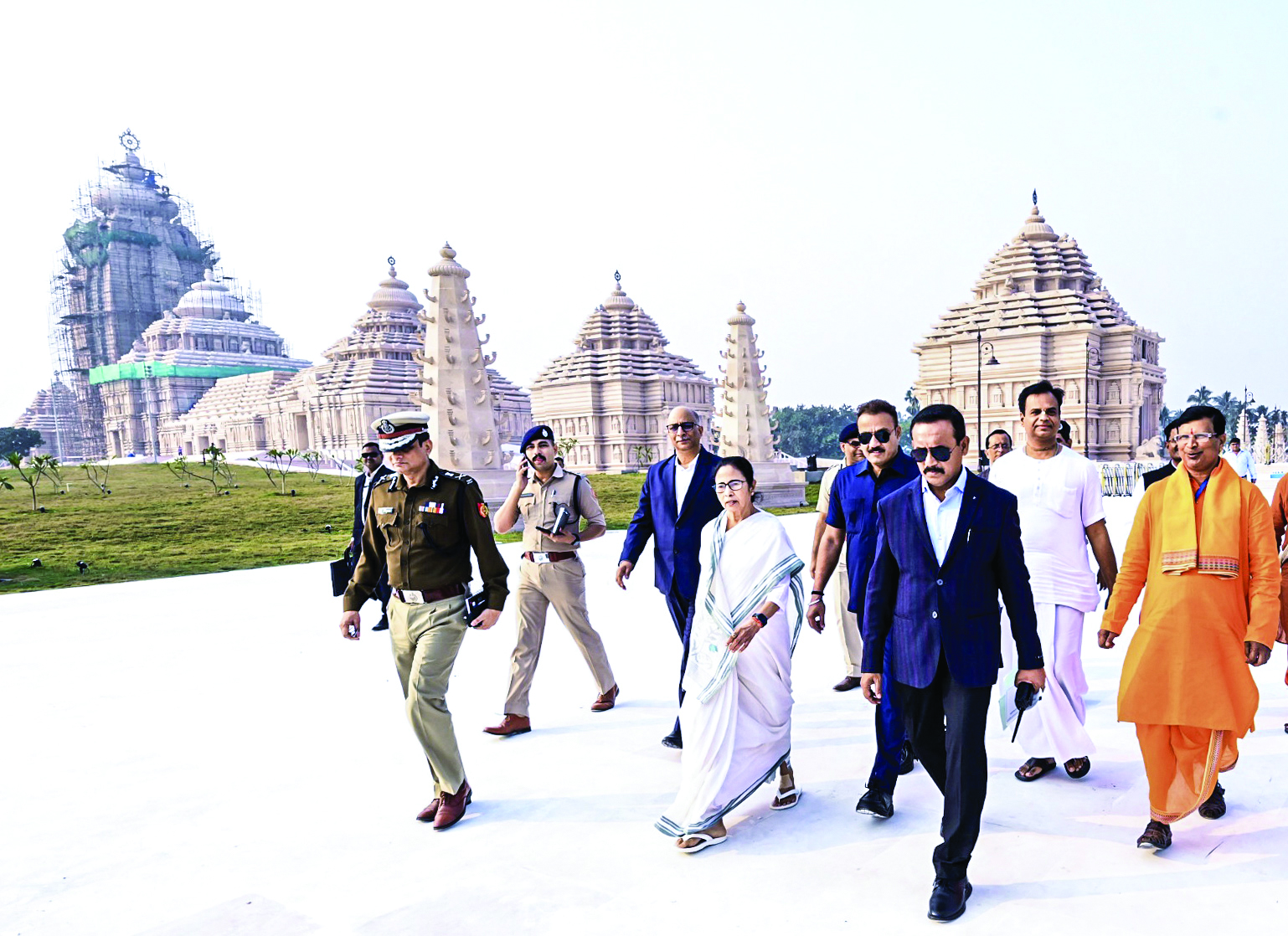For India the important question is what the lessons one should learn from Bangladesh. Particularly for the weakly governed state of West Bengal.
What does chaos create? Further chaos and matching instability. It creates several vested interest groups to add more fuel to the fire. Look at India’s neighbour Bangladesh to judge the outcome of chaos. But the more important question is what helps breeding of chaos? Just look closely at the governance of Sheikh Hasina before she was forced to leave the country. Her government was trying to maintain a balance between the fundamentalist Jamaat-e-Islami members and progressive Bangladeshis. She did a tight rope walking in diplomatic and economic relations also, keeping both Chinese and Indian interests sufficiently appeased. But the problem started when in 2024 election the so-called liberal gang from the USA, backed by strong financiers like George Soros were acting against Hasina’s re-election bid. When the election result went in favour of Hasina, chaos was resorted to, for which there were Islamic fundamentalists, directionless youth and intellectuals and well known Bangladeshis who joined readily without realising where they were heading to. Oust Hasina campaign easily flared up with so many ready fodders available.
How long will the chaotic rule in Bangladesh survive is anybody’s guess, with overwhelming view being that the interim government will not survive. But for India the important question is what the lessons one should learn from Bangladesh. Particularly for the weakly governed state of West Bengal. The attack on minorities, initially denied but now admitted by Bangladesh officially, has shaken up the usually brain-rot secularists of West Bengal. The congregation of Hindus with saffron flags across the state forced Chief Minister Mamata Banerjee to make some statements on the floor of the Assembly. Her police is also surprisingly docile in tackling the protesters.
The talkative Muslim leaders are relatively silent barring one who promised to build “Babri Masjid” in the Muslim majority district of Murshidabad. Mamata Banerjee, extra affectionate to this group of bloc voters kept quiet. Problem is when a counter statement was issued by a Hindu monk and president of Bengal Hindu Sena Ambikananda Maharaj to construct a Ram Temple in the district, the Chief Minister was also forced to keep quiet. Evidently, protests by minorities in Bangladesh have emboldened the silent majority in West Bengal, an electoral threat for Mamata Banerjee.
The threats issued by aggressive Islamists of Bangladesh on marching into India and also several incidences of insult to the Indian national flag in Bangladesh ignited the latent spirit of nationalism in West Bengal. Surprisingly even a poet known for his anti-Hindi-India lyrics had shed his lethargy. He admitted that the insult to the Indian flag had turned him from a Bengali to an Indian. These are warning signals for Mamata Banerjee dependent on anti-Hindi and pro-Islam postures for electoral victory.
The important lesson that one can learn from incidences in Bangladesh is one can never appease the hard core Islamists. Even Hasina’s Awami League had pampered this class but look at the end result. The same rule applies for India—no point appealing to the huge Muslim population. They will enjoy all benefits but cast votes against Modi’s BJP which they view as Hindu chauvinist. The electoral outcome changed drastically as soon as BJP managed to unify the Hindu votes in state elections in Maharashtra and Haryana. Clearly this is a signal to West Bengal opposition leader Suvendu Adhikari to go aggressive with his unite Hindu vote campaign. This is yet another warning signal for Mamata Banerjee. Atrocities on the minorities in Bangladesh offered Suvendu a strong ingredient to take his campaign of “unite or perish” across the state. Bangladesh has badly exposed a weakness in Mamata’s politics and helped somnambulant West Bengal voters to unite.
Bangladesh has aroused the spirit of nationalism in rest of India somewhat similar to the incident at Pulwama. This will help BJP in forthcoming state elections in Uttar Pradesh and West Bengal. Since the problem of the neighbour will certainly spill over well into 2025 and give Suvendu ammunitions to use those in West Bengal. For Mamata the regime change in Bangladesh, particularly the rule of hard core Muslims has come at a wrong time. She can neither change her spots all of a sudden nor can she remain aloof at the Hindu “naba-jagaran” as the state is witnessing now. In addition, the courts are now breathing down her neck with Justice Sanjiv Khanna becoming CJI. Her sob-stories on internal power struggle with her nephew Abhishek are not finding much takers even among her paid media. On the other hand, the state exchequer is effectively empty. With an increasingly assertive Central government, her government’s failure in the economic front cannot be hidden from public view any longer.
Chaos in the neighbouring country with whom intellectuals and ruling politicians of West Bengal felt more in common than the rest of the nation turned the talkative Bengalis, Kolkatans to be more specific, perplexed. Even Srijato, a popular poet in West Bengal had to change tact and claim that more than mother tongue, motherland is closer to heart. The insult of the Indian flag made him an Indian. If someone like Srijato changes spot it is a big boost for opposition leader Suvendu. Chaos in Bangladesh weakened the fabric of hitherto practised secular politics in West Bengal. The sooner the chaos goes the better for Mamata Banerjee. The longer it sustains and the hard-core Islamists of Bangladesh turn more abusive the better for West Bengal, a state created as a last refuge of Hindu Bengalis.
* Sugato Hazra is founder of Poliminds Consult, a content agency for aspiring and practising politicians.

